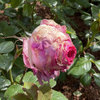Rose standard dead...rose growing back at old site...Dr. Huey??
ronda_in_carolina
16 years ago
Related Stories

GARDENING GUIDESWhat Kind of Roses Should You Grow?
Want to add the beauty of roses to your garden? Find out which ones, from old-fashioned to modern, are right for you
Full Story
WINTER GARDENINGPruning Secrets for Exquisite Roses
Encourage gorgeous blooms year after year with this time-tested advice on how to prune your rosebush in winter for health and shape
Full Story
DECORATING GUIDES12 Deadly Decorating Sins
Are your room designs suffering from a few old habits? It may be time to change your ways
Full Story
GARDENING GUIDESGreat Design Plant: Knock Out Roses
As glorious as their high-maintenance kin for a fraction of the work, Knock Out roses make even beginners look like garden stars
Full Story
LANDSCAPE DESIGNCelebrate a Sunny Climate With the Right Leafy Palm for Your Site
So you get freezes or floods. So your garden is small. These palms send excuses riding off into the tropical sunset
Full Story
EDIBLE GARDENSHow to Grow Your Own Peaches and Nectarines
Make gardening a little sweeter with these juicy fruits, which you can eat after plucking or preserve for later
Full Story
EARTH DAYGrow a Beautiful Garden With Ecofriendly Greywater
Reducing home water waste means lower bills and a healthier planet. Here's how to set up a greywater home irrigation system that can help
Full Story
GARDENING AND LANDSCAPINGGrow a Lush Privacy Screen
No need to wait forever for patio privacy the green way. These 10 ideas will get your screening up and running in no time
Full Story
EDIBLE GARDENSHow to Grow Your Own Sweet Summer Crops
This guide will help any gardener get started on growing the freshest warm-season veggies and berries for summer
Full Story
REMODELING GUIDESThe Hidden Problems in Old Houses
Before snatching up an old home, get to know what you’re in for by understanding the potential horrors that lurk below the surface
Full StoryMore Discussions









berndoodle
ronda_in_carolinaOriginal Author
Related Professionals
Allentown Landscape Architects & Landscape Designers · Paradise Landscape Architects & Landscape Designers · Clermont Landscape Contractors · Gainesville Landscape Contractors · Lakeland Landscape Contractors · Surprise Landscape Contractors · Brookside Landscape Contractors · Brooklyn Park Landscape Contractors · Corona Landscape Contractors · Hoffman Estates Landscape Contractors · Middletown Landscape Contractors · South Lyon Landscape Contractors · St. Louis Landscape Contractors · New Carrollton Landscape Contractors · Baileys Crossroads Landscape Contractorsmike_rivers
berndoodle
ronda_in_carolinaOriginal Author
windeaux
ronda_in_carolinaOriginal Author
berndoodle